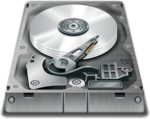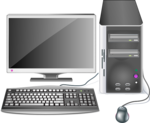Graphics and Hardware: AMD, OpenGL/Vulkan, ARM/Nvidia and More


-
AMDVLK 2020.Q3.5 Vulkan Driver Released With Several Game Fixes
AMD has kicked off the new week with the release of AMDVLK 2020.Q3.5 as their official open-source Radeon Vulkan driver for Linux systems derived in part from the same sources as their Windows Vulkan driver.
With AMDVLK 2020.Q3.5 there is updating against the Vulkan 1.2.152 API as well as a change to eliminate an invisible copy of trace buffers on AMD APU platforms. Most interesting though with this routine update are the fixes, to which there are several game fixes.
-
AOMP 11.9 Released For OpenMP Offloading To Radeon GPUs
AOMP 11.9 was released on Friday as AMD's LLVM-based compiler with Clang for C/C++ and Flang for Fortran in offloading capable OpenMP code to Radeon GPUs.
AOMP 11.9 is AMD's latest work on their LLVM 11 derived code-base for OpenMP GPU compute until the necessary patches have worked their way eventually back into the upstream code-base.
-
Mike Blumenkrantz: Draw Parameters
Let’s talk about ARB_shader_draw_parameters. Specifically, let’s look at gl_BaseVertex.
In OpenGL, this shader variable’s value depends on the parameters passed to the draw command, and the value is always zero if the command has no base vertex.
In Vulkan, the value here is only zero if the first vertex is zero.
The difference here means that for arrayed draws without base vertex parameters, GL always expects zero, and Vulkan expects first vertex.
Hooray.
-
Nvidia Buys Arm From SoftBank for $40 Billion
If completed, the transaction would instantly transform Nvidia into one of the most influential players in smartphone technology, a market that had previously eluded it. Arm, which licenses designs that other companies turn into chips, has long defined the computing technology found in most mobile devices. And Arm designs are starting to play a bigger role in cloud data centers.
But the deal is likely to prompt close scrutiny by antitrust authorities around the world. Influential Arm customers potentially affected by the transaction include Apple, Samsung Electronics, Amazon.com, Qualcomm and Huawei.
-
NVIDIA Announces $40 Billion Deal To Acquire Arm
The recent rumors panned out and NVIDIA just announced they have reached a definitive deal with SoftBank to acquire Arm.
NVIDIA is set to acquire Arm in a deal worth $40 billion USD between cash and stock. The deal is expected to take around 18 months to close and NVIDIA has stated their commitment to keeping Arm independent and their brand identity. Additionally, NVIDIA will keep Arm headquartered in the UK and will also expand Arm's presence there with a new AI research center.
-
NVIDIA to Acquire Arm for $40 Billion from Softbank
A few weeks ago, I read rumors about NVIDIA acquiring Arm, and I thought it was probably just a joke because of the obvious conflicts of interests since NVIDIA would be providing IP to competitors, who may then be wary of starting designs based on Arm NVIDIA cores and GPUs.
-
NVIDIA confirms $40 billion deal to buy Arm
Huge industry news to mention this morning! NVIDIA has confirmed they're buying Arm for $40 billion. This news comes after speculation over it for some time, which yesterday was finally announced.
Before getting wild with speculation about what will happen, NVIDIA noted a few keys points about the acquisition. Notably, they will actually keep the headquartered presence in Cambridge, UK and expand the R&D there with "establishing a world-class AI research and education center, and building an Arm/NVIDIA-powered AI supercomputer for groundbreaking research". Additionally, they will be continuing the same open-licensing model that Arm has along with "customer neutrality" and additionally they will be expanding Arm's IP licensing with some of NVIDIA's own tech.
Nothing is actually complete yet though, as these take time to go through all the proper channels. This includes regulatory approvals across he U.K., China, the European Union and the United States which they're estimating to take 18 months. See the full announcement here.
-
Nvidia will keep ARM licensing “neutral,” wants to license GPU tech, too
Nvidia has officially announced that it is buying ARM from SoftBank for $40 billion. The deal is one of the biggest tech acquisitions of all time and will see Nvidia control the world's most popular CPU architecture.
Nvidia's press release oddly paints the deal as primarily about "AI," saying the deal "brings together NVIDIA's leading AI computing platform with ARM's vast ecosystem to create the premier computing company for the age of artificial intelligence." Nvidia apparently sees GPU-accelerated AI as its next big growth sector, and the company currently sells embedded systems for self-driving cars and multi-GPU systems for workstations and servers, offering high-teraflop deep-learning performance. Somehow it thinks ARM will help with this.
-
Phoronix Test Suite 10.0 Milestone 2 Now Available For Testing
The second development release of the forthcoming Phoronix Test Suite 10.0-Finnsnes is now available for testing.
Following last month's debut of Phoronix Test Suite 10.0 M1 and the alpha of the new OpenBenchmarking.org, the second development release is now available ahead of the planned Phoronix Test Suite 10.0 release in October.
-

- Login or register to post comments
 Printer-friendly version
Printer-friendly version- 2965 reads
 PDF version
PDF version
More in Tux Machines
- Highlights
- Front Page
- Latest Headlines
- Archive
- Recent comments
- All-Time Popular Stories
- Hot Topics
- New Members
digiKam 7.7.0 is released
After three months of active maintenance and another bug triage, the digiKam team is proud to present version 7.7.0 of its open source digital photo manager. See below the list of most important features coming with this release.
|
Dilution and Misuse of the "Linux" Brand
|
Samsung, Red Hat to Work on Linux Drivers for Future Tech
The metaverse is expected to uproot system design as we know it, and Samsung is one of many hardware vendors re-imagining data center infrastructure in preparation for a parallel 3D world.
Samsung is working on new memory technologies that provide faster bandwidth inside hardware for data to travel between CPUs, storage and other computing resources. The company also announced it was partnering with Red Hat to ensure these technologies have Linux compatibility.
|
today's howtos
|









.svg_.png)
 Content (where original) is available under CC-BY-SA, copyrighted by original author/s.
Content (where original) is available under CC-BY-SA, copyrighted by original author/s.

Recent comments
1 year 11 weeks ago
1 year 11 weeks ago
1 year 11 weeks ago
1 year 11 weeks ago
1 year 11 weeks ago
1 year 11 weeks ago
1 year 11 weeks ago
1 year 11 weeks ago
1 year 11 weeks ago
1 year 11 weeks ago